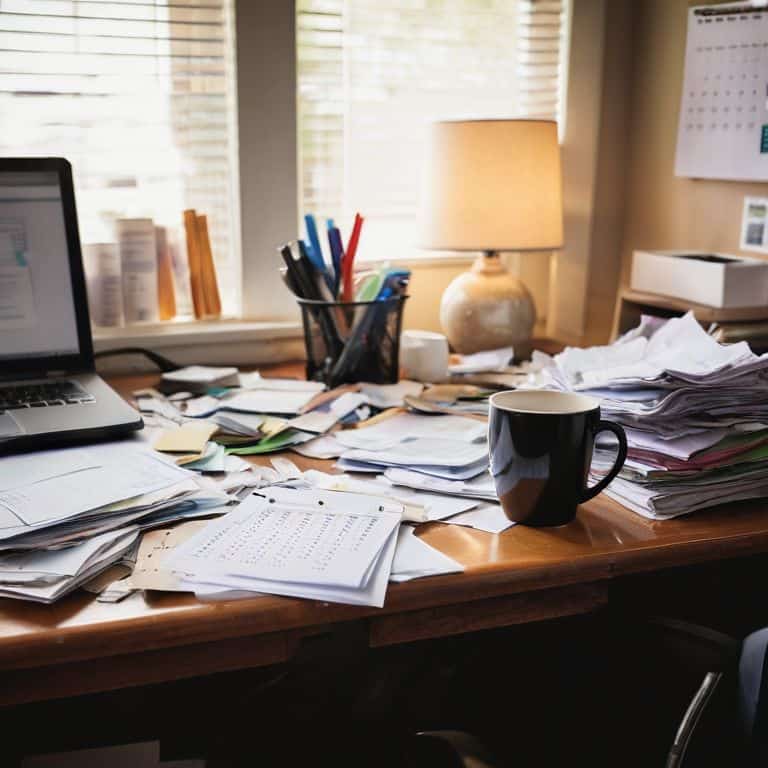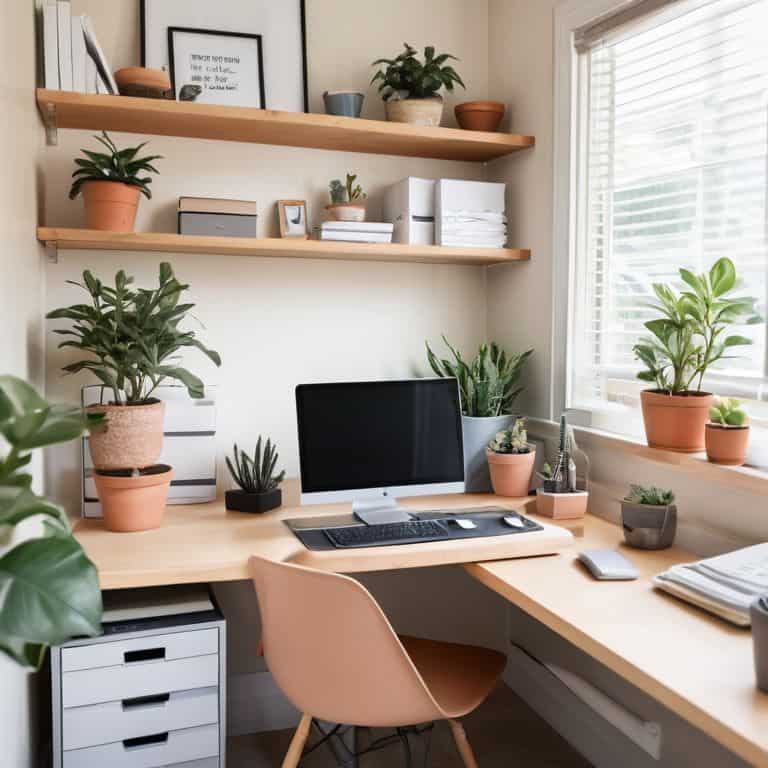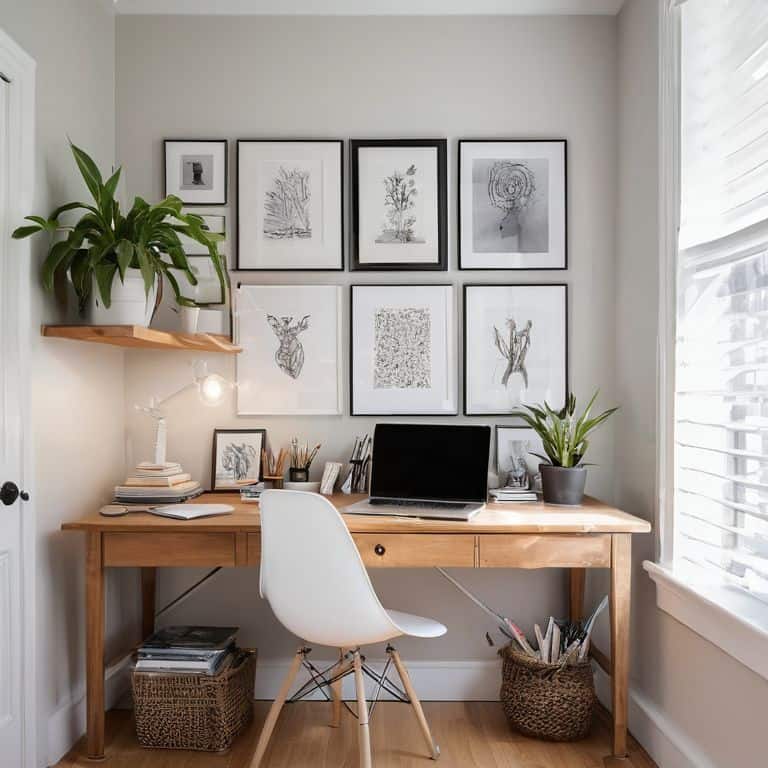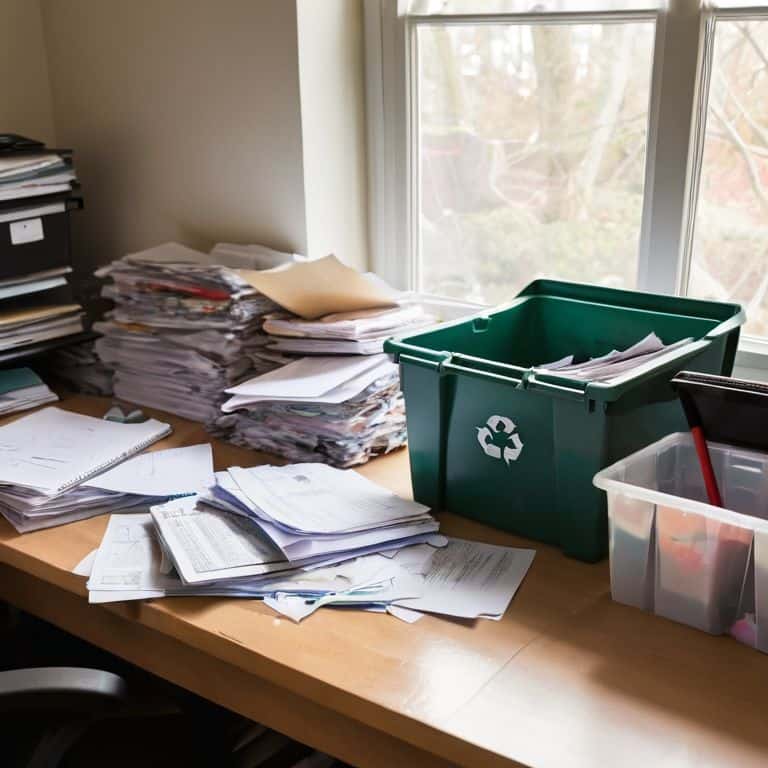As I sit in my serene, organized home, surrounded by the soothing sounds of ambient music and the gentle glow of my bonsai trees, I’m reminded of the transformative power of a well-organized space. I’ve seen it time and time again: when we tackle the chaos of our physical surroundings, we open ourselves up to a sense of calm and clarity that can be truly life-changing. That’s why I’m passionate about sharing my expertise on a guide to paper clutter, to help you create a sanctuary that nurtures your mind and soul.
In this article, I promise to cut through the clutter (no pun intended) and offer you practical, straightforward advice on how to tame the paper chaos that’s been weighing you down. You won’t find any fancy systems or unrealistic expectations here – just honest, no-hype guidance on how to create a space that truly feels like your own personal oasis. By the end of this guide, you’ll have the tools and confidence to take control of your paper clutter and start enjoying the sense of serenity that comes with a well-organized home.
Table of Contents
Guide Overview: What You'll Need

Total Time: 1 hour 30 minutes
Estimated Cost: $10 – $20
Difficulty Level: Easy
Tools Required
- Shredder (for sensitive documents)
- Scissors (for cutting paper to size)
- Paper Tray (for organizing documents)
- Label Maker (for labeling folders and categories)
Supplies & Materials
- File Folders (various colors for categorization)
- Ink and Toner (for printing labels and documents)
- Storage Bins (for storing bulky items like receipts)
- Papers and Cards (for creating a paper tray organizer, approximately 8 inches by 10 inches)
Step-by-Step Instructions
- 1. First, let’s start by gathering all the paper clutter from around the house and sorting it into one area, like a desk or table. This will give us a clear view of what we’re dealing with and help us create a sense of control over the chaos. Take your time, and don’t worry too much about sorting at this stage – just focus on getting everything into one place.
- 2. Next, we need to categorize the paper clutter into different types, such as bills, receipts, documents, and junk mail. This will help us decide what to keep, what to shred, and what to recycle. Use separate boxes or folders for each category to keep things organized and make the process less overwhelming.
- 3. Now, let’s set up a sorting station with three main piles: keep, shred, and recycle. Be ruthless – if you don’t need it, get rid of it. For papers you need to keep, consider scanning them and saving them digitally to free up physical storage space. Remember, the goal is to create a sense of calm and clarity in your home, not to hold onto unnecessary clutter.
- 4. Once you’ve sorted through your paper clutter, it’s time to create a filing system that works for you. This might involve setting up a file cabinet or using a digital tool to store and organize your documents. The key is to create a system that is easy to maintain and makes it simple to find what you need when you need it.
- 5. With your filing system in place, it’s time to deal with the paperwork that requires action, such as bills or letters that need a response. Set aside some time to tackle these tasks, and consider implementing a “touch once” rule, where you deal with each piece of paper as soon as you touch it, rather than putting it down and dealing with it later.
- 6. To prevent paper clutter from building up again in the future, let’s set up a regular maintenance routine. This might involve setting aside 10-15 minutes each week to sort through any new paperwork and keep your filing system up to date. By making this a habit, you can keep your paper clutter under control and enjoy the sense of calm and clarity that comes with it.
- 7. Finally, take some time to reflect on your progress and think about how you can apply the principles of decluttering and organizing to other areas of your life. Remember, the goal of decluttering is not just to get rid of physical clutter, but to create a sense of mental clarity and calm that benefits all areas of your life. By taking control of your paper clutter, you’re taking the first step towards creating a more peaceful and organized home.
A Guide to Paper Clutter

As we delve into the world of paper clutter, it’s essential to consider the benefits of digital document storage. By scanning and storing your documents digitally, you can free up physical space and reduce the likelihood of losing important papers. This approach can be particularly useful for creating a paperless office space, allowing you to focus on more pressing tasks.
When it comes to organizing paper files at home, it’s crucial to establish a system that works for you. This might involve categorizing documents into clear folders or using labels to identify specific files. By implementing effective paper clutter reduction strategies, you can save time and reduce stress in the long run. Remember, the goal is to create a system that is easy to maintain and adapt to your changing needs.
To take your paper management to the next level, consider scanning documents for digital archiving. This approach not only saves physical space but also provides an added layer of security against loss or damage. By combining digital storage with a well-organized physical system, you can achieve a sense of calm and control over your paper clutter.
Benefits of Digital Storage Sanctuary
By transitioning to digital storage, you’re not only freeing up physical space, but also creating a sanctuary for your mind. Imagine being able to access any document, receipt, or note with just a few clicks, rather than digging through piles of paper. This sense of control and ease can be incredibly liberating, allowing you to focus on what truly matters. As you make the shift, you’ll start to notice the benefits extending beyond just physical clutter – your mental clarity and sense of calm will begin to flourish as well.
In this digital sanctuary, you’ll find that stress and anxiety start to melt away, replaced by a sense of serenity and organization.
Taming Paper Chaos at Home
Taming paper chaos at home starts with acknowledging the emotional weight it carries. For many, paper clutter is more than just a physical mess – it’s a symbol of unfinished tasks, unmet deadlines, and unfulfilled obligations. By addressing the root causes of our paper clutter, we can begin to let go of the guilt and anxiety that comes with it. I encourage my clients to “interview” each piece of paper, asking themselves if it serves a purpose or brings them joy. This simple yet powerful exercise helps to clarify what’s truly important and what can be let go of.
As we work through the paper clutter, it’s essential to create a system that works for you, not against you. This might involve implementing a simple filing system, designating a specific spot for paperwork, or establishing a regular routine for tackling new documents. By creating a sense of control and order, we can begin to transform our relationship with paper clutter and, in turn, our living space.
From Piles to Peace: 5 Essential Tips to Tame Paper Clutter
- Start by designating a specific area for handling paperwork, like a desk or a tray, to contain the chaos and make it more manageable
- Implement a ‘touch once’ rule for each piece of paper: deal with it, file it, or toss it the moment you pick it up to avoid unnecessary handling
- Consider digitizing your documents to free up physical space and reduce the stress of clutter; services like cloud storage can provide a secure and accessible sanctuary for your files
- Establish a regular ‘paper day’ to maintain your newly organized system, whether it’s weekly, biweekly, or monthly, to keep clutter at bay and your mind clear
- Practice the art of ‘interviewing’ your papers: ask yourself if each document brings you joy, serves a purpose, or is necessary for your records; if not, let it go to create a more streamlined and peaceful environment
Key Takeaways for a Clutter-Free Sanctuary
By tackling paper clutter, you can create a ripple effect of calm and clarity that extends beyond your physical space to your mental well-being
Implementing simple, logical systems for managing paper and digital documents can help you break free from the cycle of clutter and disorganization
Embracing the concept of ‘every object having a purpose or a place’ can empower you to make intentional decisions about what you keep, and what you let go of, ultimately leading to a more serene and organized living space
Embracing the Clarity
As we sift through the layers of paper clutter, we’re not just organizing our physical space, we’re uncovering the mental clarity that’s been buried beneath the chaos, reminding us that the true sanctuary was within us all along.
Nathan Reed
From Clutter to Clarity: A New Beginning

As we conclude this guide to paper clutter, let’s reflect on the key takeaways. We’ve explored the importance of creating a paper clutter sanctuary by implementing simple, logical systems for managing paper at home. By applying these step-by-step instructions and embracing the benefits of digital storage, you’ve taken the first steps towards a more organized, peaceful living space. Remember, every object in your home should have a purpose or a place, and by applying this principle, you’ll be well on your way to a clutter-free home.
Now, as you embark on this journey to a more organized you, keep in mind that every small step counts. The process of taming paper clutter is not just about tidying up; it’s about creating a sanctuary that nurtures your mind and soul. By extending the principles outlined in this guide to other areas of your life, you’ll find that the sense of calm and clarity you’ve achieved will begin to radiate outward, positively impacting every aspect of your life. So, take a deep breath, enjoy the sense of accomplishment, and look forward to the serenity that awaits you in your newly organized home.
Frequently Asked Questions
How do I decide what papers to keep and what to discard in my home office?
Let’s simplify this decision process. I like to call it an “interview” with each paper. Ask yourself, ‘What’s the purpose of keeping this?’ or ‘Does it bring me joy or serve a functional need?’ Be honest, and let that guide your choice to keep or gently let it go.
What are some effective ways to implement a digital storage system for sensitive documents?
To create a digital storage sanctuary, consider investing in a secure cloud storage service and a reliable external hard drive for backups. Assign clear categories and folders for sensitive documents, and set reminders to regularly review and update your digital files, ensuring a sense of control and calm.
Can I really go paperless, and if so, what are the benefits of doing so for my mental clarity and physical space?
Embracing a paperless life is absolutely possible, and it can be incredibly liberating. By digitizing your documents and bills, you’ll not only free up physical space, but also reduce mental clutter and stress. Imagine having all your important papers at your fingertips, without the burden of dusty files and cluttered desks – it’s a game-changer for mental clarity and peace of mind.
